Create a product
To start right ahead it is necessary to create a product first.
This can be done below the Notification Settings:

After that, you have to decide, if you want to use the Advanced Mode or the Basic Mode. Here are the differences between:
| Basic Mode | Advanced Mode |
|---|---|
| ❗ Only a plain vanilla cloud project will be setup | 🚀 Fully automated cloud project setup |
| ❌ No runtime support | 🚀 Fully automated runtime setup |
| ❗ No ARM compliance | ✅ ARM Compliance |
| ❌ Only a basic Code Repo | ✅ Code Repository with best practices Policies |
| ❌ No CI/CD pipeline support | ✅ Fully integrated best practices Pipelines |
| ❌ No integrated Snyk Setup | ✅ Integrated Snyk Setup |
| ❌ No integrated SonarQube Setup | ✅ Integrated SonarQube Setup |
| ❌ No integrated | ✅ Nearly all SIMPL Guidelines automated |
| ❌ Limited Dashboard capabilities | ✅ Advanced Dashboards |
Please be advised, using the Basic Mode may result in a revision finding.
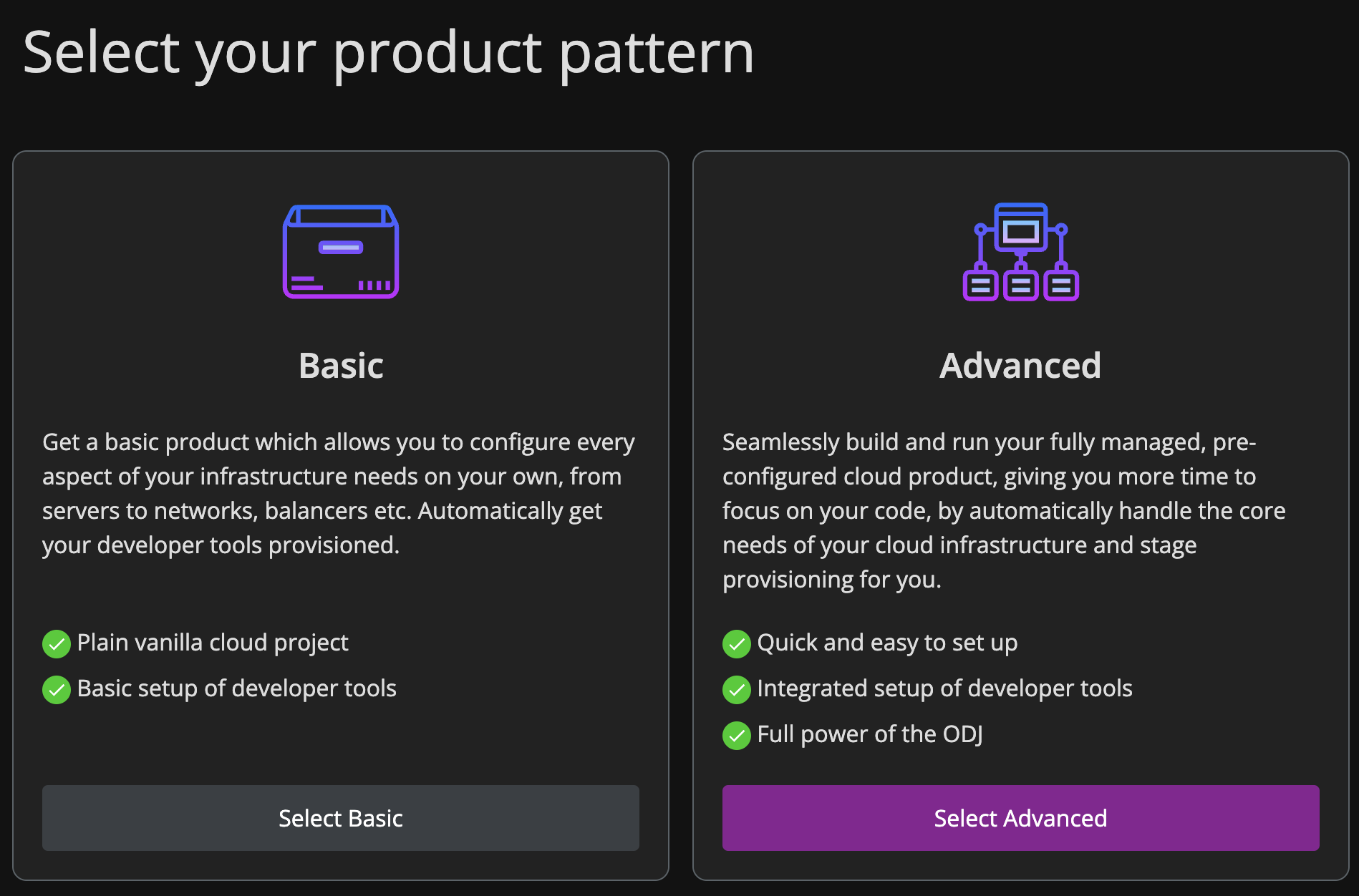
After that please fill out at least the Name and a unique ID for your product. The ID should be held short but human readable, since it will be used in technical names.

Please be advised, the ODJ is now creating new SIAM Roles and automatically orders them for you. Due to SIAM this can last up to 24h!
Add runtime environment
After you have created a product, you should setup a Runtime. Currently we support the hyperscaler STACKIT, Microsoft Azure and Google Cloud.

Regardless of which hyperscaler you choose, you can choose if you want to have a work and a live environment and if you want to have different stages in your work environment. This can be for example one stage for development and one stage for testing. ODJ will create separate Cloud projects for the work environment and the live (production) environment. Separating the production environment is a common best practice to raise security and stability. The work environment can contain multiple stages which will be realized with Kubernetes namespaces.
In respect to the 12 Factor Principle Dev/prod parity both environments "Work" and "Live" and all "Stages" are configured in the same manner.
Mostly, the difference between the different hyperscalers are the sizes of the machine types.
- STACKIT
- Azure
- GCP
STACKIT should be your preferred hyperscaler to use. For monitoring we are using Argus with its different plans. The smallest one is already selected.
Please be advised, the ONE DIRECTION specifies, monitoring is a must and can not be deselected.
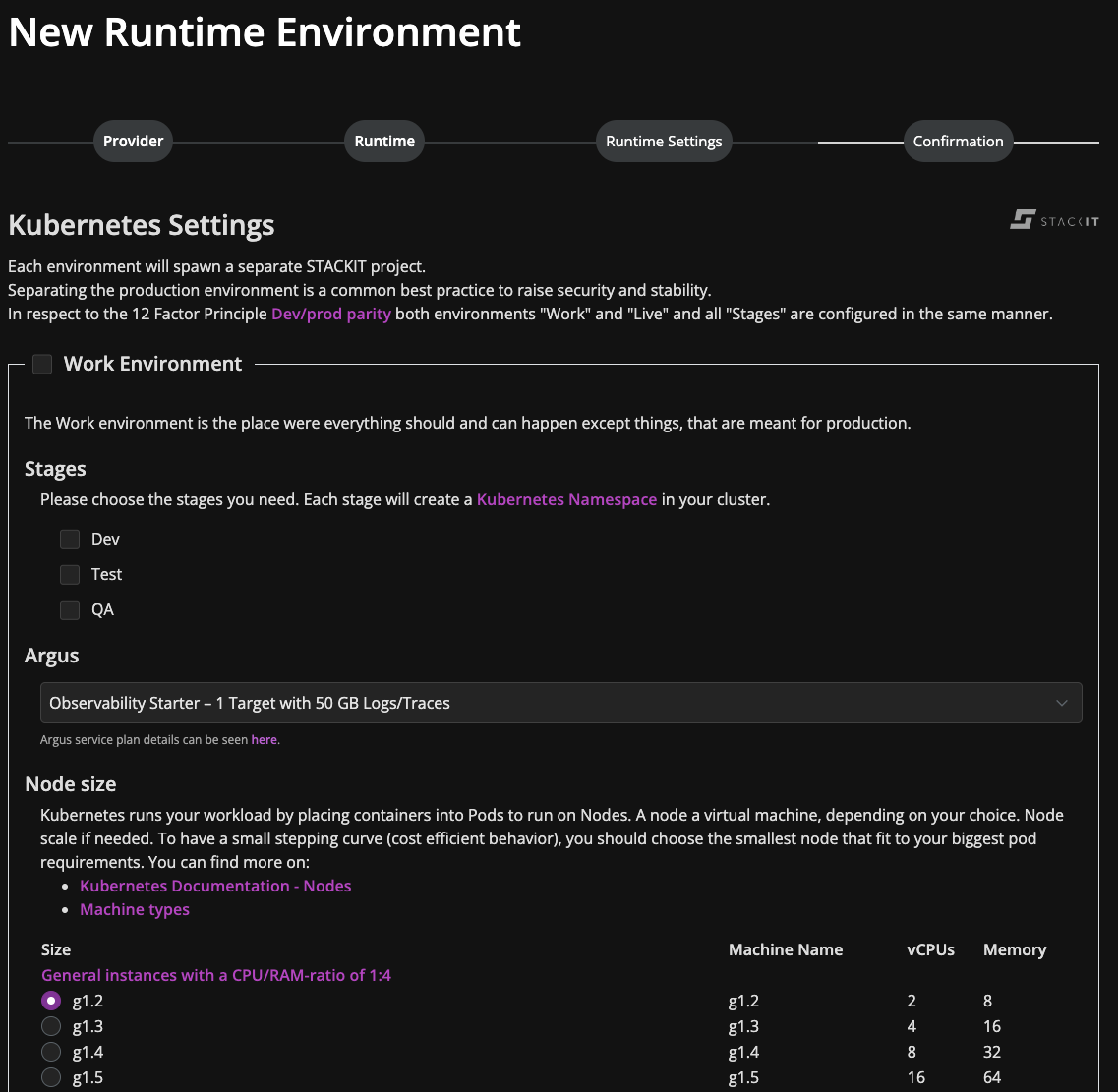
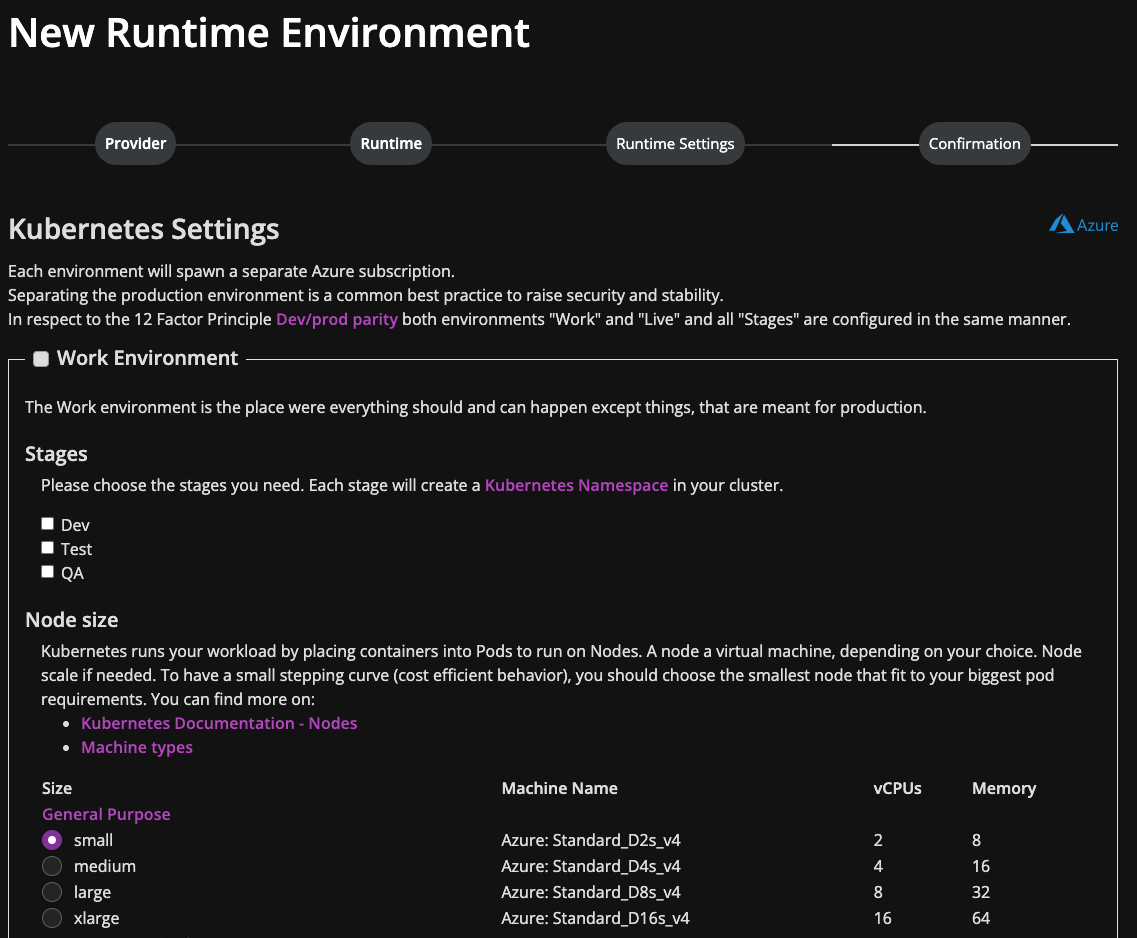
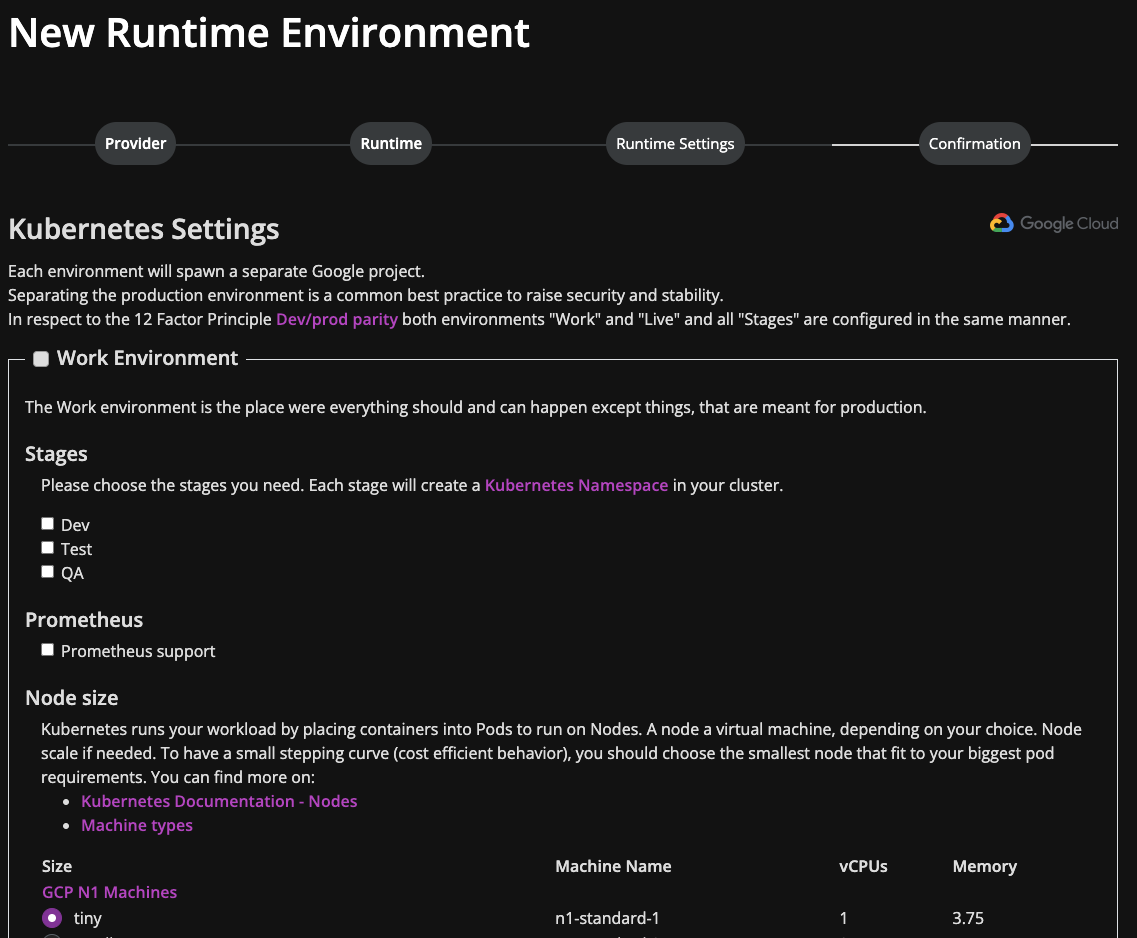
Product overview
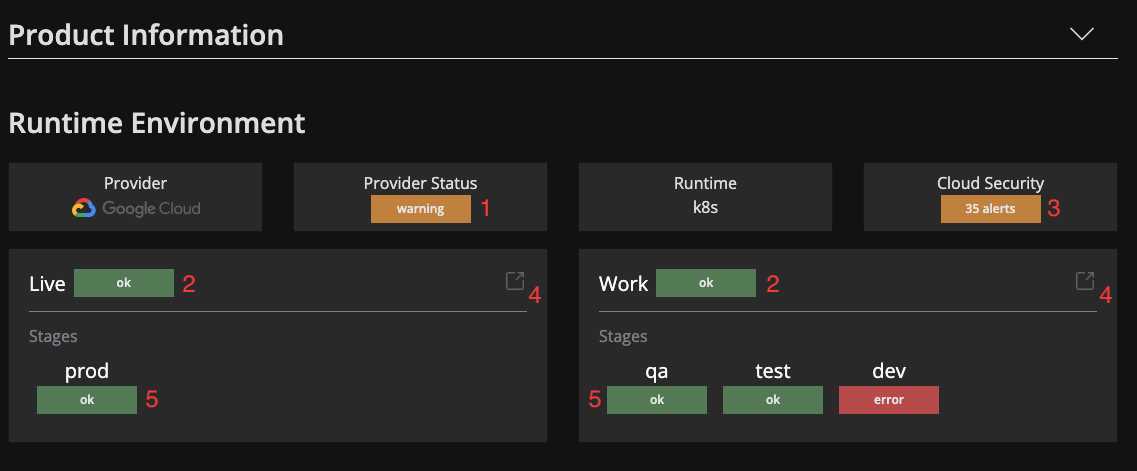
- Link to Cloud Status page
- Link to Infra history
- Link to Prisma alerts
- Link to hyperscaler project
- Link to stage runs/history